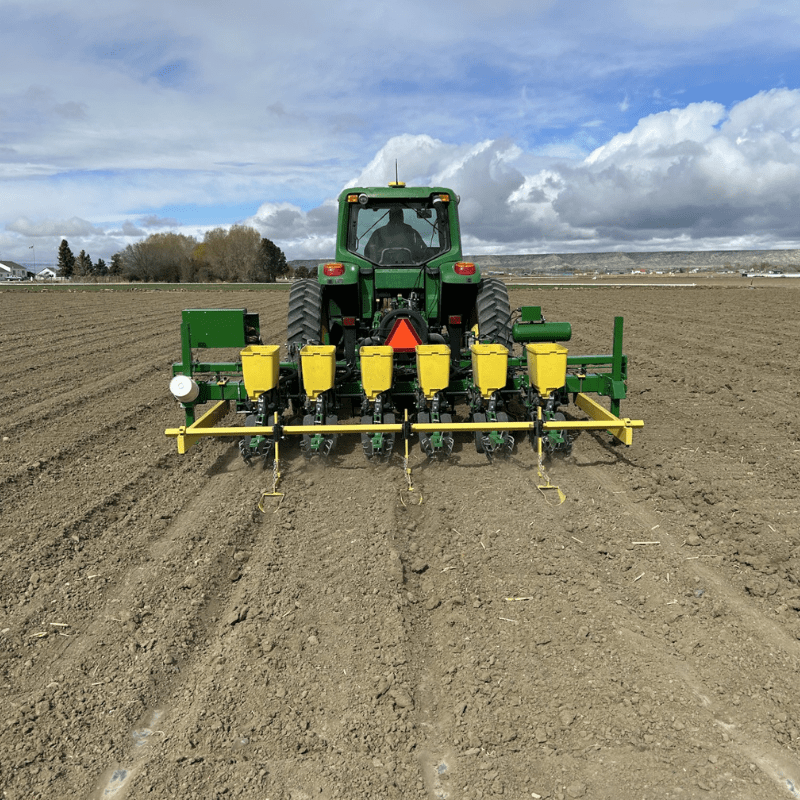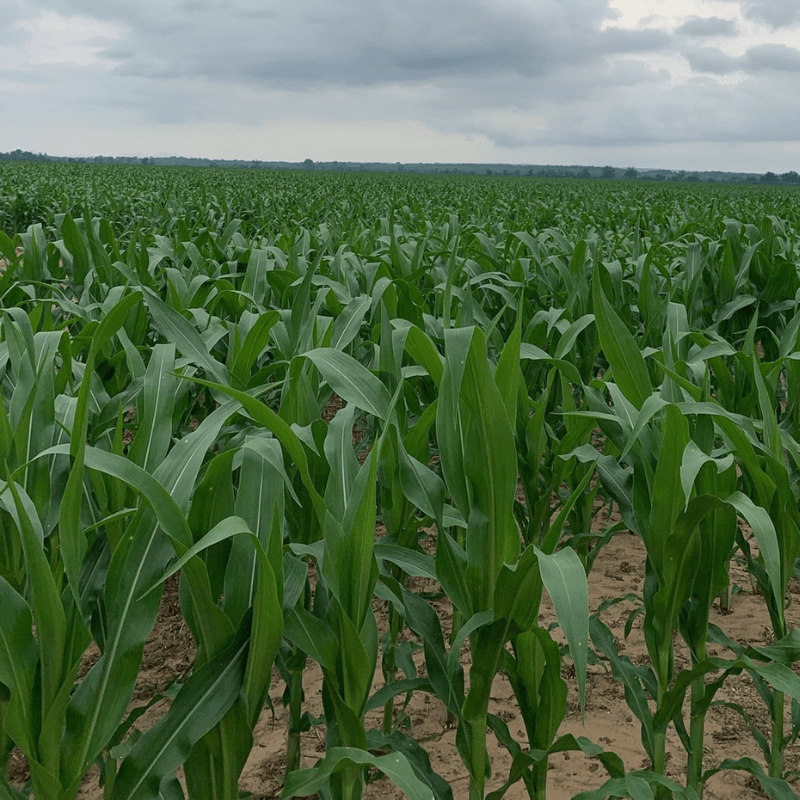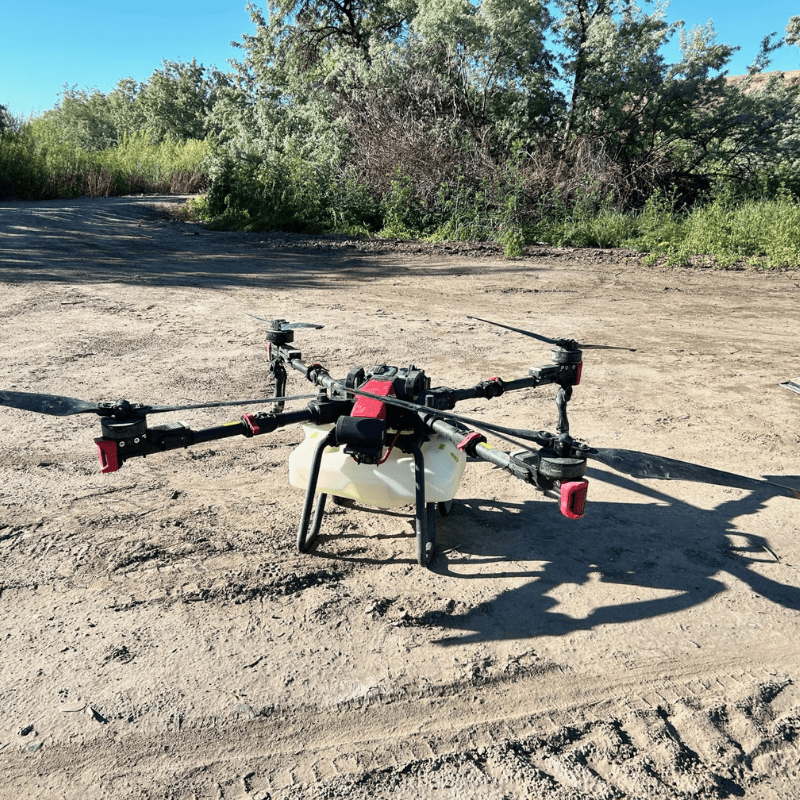Almond Red Leaf Blotch was first detected in California in May 2024 and has already spread to multiple counties in the Northern San Joaquin Valley. This fungal disease, established in Mediterranean almond-growing regions for decades, causes premature defoliation that reduces yields in both current and subsequent seasons.
What is Red Leaf Blotch?
Almond Red Leaf Blotch (RLB) is caused by the fungal pathogen Polystigma amygdalinum (previously known as P. ochraceum), an ascomycete fungus highly specific to almond trees. This biotrophic pathogen cannot be grown on artificial edia, confirming its dependence on living almond tissue.
Symptoms of Red Leaf Blotch
The disease manifests through a predictable progression of symptoms:
- Initial small, pale yellowish spots appear on both leaf surfaces
- Spots enlarge to 1-2 cm and turn yellow-orange with reddish-brown centers
- Lesions may combine to covering large portions of the leaf
- Affected leaves become necrotic, curl (especially from tips or margins), and drop prematurely
Disease cycle characteristics
A critical characteristic is the 30–40-day latent period between infection and visible symptoms, making early detection challenging. The disease significantly impacts tree physiology by reducing photosynthetic capacity, impairing nutrient accumulation, and directly reducing yields. P. amygdalinum follows a monocyclic disease cycle with one infection cycle per season:
- Ascospores form in perithecia on infected leaves that fell the previous season
- Mature ascospores release during spring, coinciding with flowering time and petal fall
- Young, emerging leaves become infected during rainfall events
- After the latent period, symptoms appear (typically late April to mid-May)
- Fungal stromata develop in infected leaf tissue
Infected leaves drop prematurely in summer, and perithecia develop on fallen leaves in autumn and winter. RLB favors temperatures between (50-68°F) and requires rainfall for ascospore release and infection. Environmental conditions during October to January influence ascospore production for the following growing season.
California's Introduction to Red Leaf Blotch
Almond Red Leaf Blotch was first detected in California in May of 2024 in an orchard growing Nonpareil, Monterey, and Fritz varieties on the border of Merced and Madera counties. Following field sampling and laboratory analyses, researchers from UC Davis confirmed the presence of P. amygdalinum.
This represents the first documented case in California almonds. Since the initial detection, RLB has been observed in multiple counties in the Northern San Joaquin Valley: Madera, Merced, San Joaquin and Stanislaus. The rapid identification across multiple counties suggests the disease is already somewhat widespread throughout a key almond-growing region of California. UC Cooperative Extension specialist Dr. Florent Trouillas has expressed surprise at how widespread the disease already is in its first year in California.
As of mid-2025 RLB is considered a new but potentially serious threat to California's almond industry. The disease is in its early establishment phase, with many pest control advisers reporting confusion upon seeing the distinctive symptoms, which are unique and not easily confused with other known almond diseases in California.
How should an almond grower manage Red Leaf Blotch?
Growers must implement preventive fungicide applications timed with petal fall and follow-up treatments after spring rains, combined with cultural practices to reduce the likely hood of it surviving the winter.
Common California varieties like Nonpareil almonds appear susceptible, while management strategies from Spain provide a foundation for control until California-specific research progresses.
Managing Red Leaf Blotch: Chemical controls
Research from Spain and other Mediterranean regions indicates that RLB is considered a major disease with significant yield impacts, particularly in trees with high disease severity and in water-stressed conditions.
Based on research from Spain and recommendations from University of California researchers, several fungicide groups are effective against RLB and approved for use in California almonds. Most effective fungicide groups:
- FRAC Group 7 (SDHIs): Fluopyram, penthiopyrad, boscalid
- FRAC Group 11 (QoIs/strobilurins): Trifloxystrobin, pyraclostrobin
- FRAC Group 3 (DMIs): Select compounds like propiconazole, difenoconazole
- FRAC Group M3 (Dithiocarbamates): Thiram, mancozeb
- FRAC Group M4 (Phthalimides): Captan
Research from Spain (2015-2019) showedsystemic fungicides in FRAC groups 7 and 11 demonstrated the greatest efficacy (60-90%), with mixtures containing active ingredients from both groups showing superior control.
Critical application weather and timing:
- First application at petal fall (most critical timing)
- Second application ~2 weeks after petal fall if rain persists
- Third application ~5 weeks after petal fall if rain persists
These timings align with treatment schedules for other almond diseases like shot hole and anthracnose, allowing growers to target multiple diseases with the same applications timing.
Rain is essential for RLB ascospore release and dispersal, so applications should be timed relative to rainfall events. Applications timed 15 days after rainfall exceeding 0.5 inches when temperatures are between 50-60°F showed comparable efficacy to periodic applications but required fewer treatments.
Cultural practices and orchard management
Since the fungus overwinters on fallen infected leaves, cultural practices focused on leaf litter management are critical:
- Remove infected leaf litter from the orchard floor to reduce primary inoculum
- Apply urea (1-2 pounds per 400 pounds of leaves) to fallen leaves to accelerate decomposition
- Incorporate fallen leaves into the soil to maintain moisture and encourage decomposition
- Zinc sulfate applications (20-40 lb/acre) in late October to early November can hasten leaf fall and prevent inoculum build-up
Key Takeaways:
Almond Red Leaf Blotch represents a significant new threat to California's almond industry, but effective management is possible through an integrated approach of preventive fungicide applications, cultural practices, and monitoring.
Since the disease is monocyclic with only one infection cycle per season, focusing on reducing primary inoculum and protecting young leaves during the critical infection period in spring will be key to successful control.
For more information or help with specific questions, talk to your Simplot Grower Solutions Crop Advsior.
Authors
Jon Hubble
Mike Almasri











